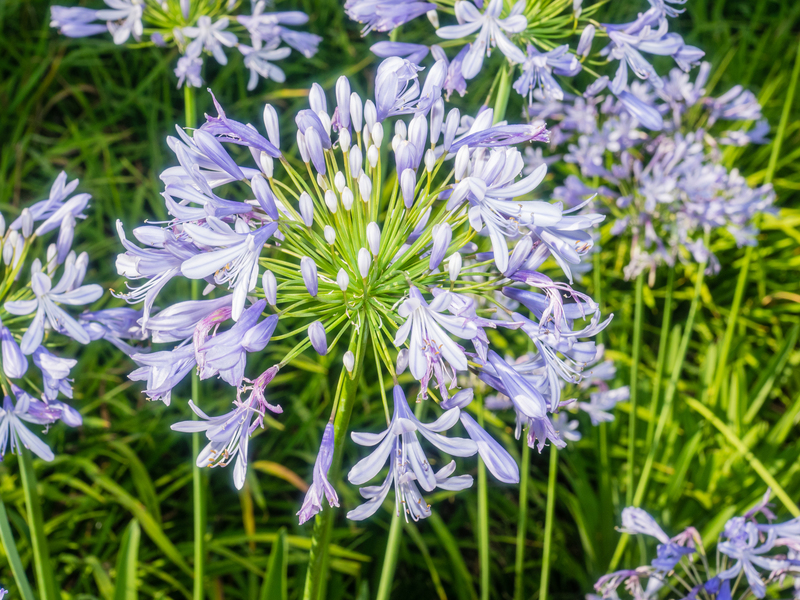Winterize Your Garden Plants for Ultimate Protection
Posted on 29/06/2025
Winterize Your Garden Plants for Ultimate Protection: A Comprehensive Guide
As the temperature drops and winter approaches, winterizing your garden plants is essential for ensuring their survival and vitality come spring. A proper approach to winter protection for garden plants not only shields your precious flowers, shrubs, and trees from harsh weather, but it also sets the stage for a flourishing garden next year. In this detailed guide, we will cover all the vital steps and expert tips to prepare your garden for winter and provide ultimate protection for your plants during the coldest months.

Understanding the Need to Winterize Garden Plants
Each season brings its own gardening challenges, but winter can be especially devastating if unprepared. Frost, snow, freezing winds, and fluctuating temperatures can damage roots, stems, and foliage. Winterizing garden plants is thus a proactive strategy that ensures:
- Reduced risk of plant loss due to extreme cold temperatures
- Enhanced plant health and resilience in spring
- Prevention of fungal diseases and pest infestations
- Preservation of soil quality and structure
Which Plants Need Special Winter Protection?
Not all garden plants require the same degree of winter care. It's important to recognize which species are vulnerable. Tender perennials like dahlias and cannas, young saplings, tropical plants, and container plants are especially sensitive to cold temperatures and frost. Even hardy perennials and some evergreen shrubs can benefit from extra protection, especially in regions prone to harsh winter conditions.
Top Strategies to Winterize Garden Plants
Let's explore the best techniques for winterizing your garden and delivering optimal protection for every plant in your landscape.
1. Deep Watering Before the First Frost
Water acts as an insulator in plant tissues and soil. Deep watering your garden before the ground freezes ensures your plants go into winter well-hydrated. Pay special attention to:
- Evergreen trees and shrubs, which lose moisture through needles and leaves year-round
- Newly planted trees and shrubs that haven't yet developed deep root systems
2. Mulching: Nature's Protective Blanket
Applying a thick layer of mulch around your plants is one of the most effective ways to protect your garden during winter.
- What type of mulch? Use straw, shredded leaves, wood chips, or compost.
- How much mulch? Aim for 2-4 inches, forming a doughnut-like ring around the base of plants (not directly touching stems to prevent rot).
- Insulate roots from temperature extremes
- Retain soil moisture
- Prevent soil heaving caused by freeze-thaw cycles
3. Pruning for Plant Health
Pruning is another crucial step to winterize garden plants:
- Remove dead, diseased, or damaged branches to reduce pest and disease risk.
- For most shrubs and perennials, prune after dormancy--but avoid cutting spring-flowering plants, as they set buds in autumn.
4. Protecting Young and Tender Plants
Some plants need a bit more attention when winterizing your outdoor plants, including:
- Tender bulbs: Dig up and dry dahlias, cannas, and gladiolus bulbs. Store them in a cool, dark, frost-free place.
- Newly planted trees and shrubs: Wrap trunks with burlap or tree guards to prevent cracking from temperature fluctuations and guard against deer or rabbit browsing.
5. Using Garden Covers and Cloches
Covering vulnerable plants with frost cloth, burlap, or garden blankets is essential in regions with unpredictable weather swings or sudden frosts.
- Use breathable materials to allow air and moisture circulation, preventing mold.
- For small plants, portable cloches or cold frames offer excellent winter protection and extend your growing season.
6. Adjusting Soil and Fertilizer Practices
Nutrient management is a key part of winterizing your backyard plants:
- Stop nitrogen-heavy fertilization in late summer or fall. This halts new tender growth, which is vulnerable to frost.
- Amend soil with compost for nutrients and improved texture, supporting root health through winter.
7. Protecting Container Plants
Potted plants are especially at risk because their roots are exposed to cold air on all sides. Strategies include:
- Cluster pots together in a sheltered location, such as against the house wall.
- Wrap containers with bubble wrap, burlap, or blankets for insulation.
- Elevate pots off cold surfaces to prevent freeze damage to roots.
- Consider moving delicate containers indoors, into a garage, or enclosed porch for ultimate plant winter protection.
8. Caring for Lawns and Groundcovers
Don't neglect your lawn and groundcovers when winterizing your garden!
- Rake up leaves and debris to prevent mildew and disease.
- Aerate compacted soil for better root access to water and nutrients come spring.
- Cut grass at a final, slightly shorter length before the first heavy freeze--avoid cutting too low, which can stress the lawn.
Special Winter Plant Protection Tips
Protecting Trees and Large Shrubs
Large, established trees are usually self-sufficient, but young saplings and certain species like maples and fruit trees benefit from extra care.
- Apply mulch at the base to insulate roots.
- Wrap trunks with tree guards to prevent freeze cracks and damage from rodents.
- Shape branches during pruning to reduce breaking under heavy snow.
Preventing Animal Damage
Hungry winter animals--deer, rabbits, voles--may eat bark and tender shoots.
- Install fencing or netting around sensitive plants and tree trunks.
- Use animal repellents or wrap trunks with breathable fabric to deter nibbling.
- Clear mulch a few inches away from trunks to avoid creating hiding spots for rodents.
Common Mistakes to Avoid When Winterizing Garden Plants
- Applying thick mulch too early in autumn, which can retain moisture and invite disease.
- Fertilizing too late in the season, prompting new, unprotected growth.
- Forgetting to water evergreens during dry winter spells.
- Leaving containers exposed on hard surfaces without insulation.
- Neglecting to identify and protect tender or recently planted species.
Avoid these errors to ensure your efforts to safeguard plants for winter are successful.
Winterizing Different Types of Garden Plants: Best Practices
Winterizing Perennials
- Cut back old stems after the first frost.
- Mulch heavily, especially for marginally hardy varieties.
- Leave ornamental grasses and seed heads for winter interest and wildlife benefit.
Winterizing Annuals
- Remove spent annuals and add to compost.
- Collect seeds for spring planting.
- Clean and store pots and garden tools to prevent disease carryover.
Winterizing Vegetables and Herbs
- Harvest remaining crops before heavy frost.
- Mulch overwintering crops like garlic, onions, and spinach.
- Cover cold frames with insulative garden fleece.
- Bring tender herb pots indoors or provide outdoor shelter.
Winterizing Roses
- Remove old blooms and weak canes.
- Mound soil or compost around the base for extra root insulation.
- Wrap climbing roses or tender types in burlap for added protection.

FAQ: Winterizing Your Garden Plants
- When is the best time to start winterizing your garden?
Begin after the first light frost, but before heavy freezes. Timing varies by region, so watch local weather. - Do I need to water my garden during winter?
Yes! Water during dry periods if the ground isn't frozen, especially evergreens and new plantings. - Is it okay to use plastic for covering plants?
Plastic can trap moisture and heat, leading to mold. Choose breathable fabrics like burlap or horticultural fleece.
Conclusion: Make Winter Plant Protection a Priority
Winterizing your garden plants is a small effort for an enormous reward: healthy, beautiful plants that bounce back with vigor in spring. By following these proven strategies for protecting your garden in winter, you'll keep your landscape robust, your soil healthy, and your investment in your garden safe from the ravages of cold weather.
Don't wait until the cold sets in--start winterizing your garden today for ultimate plant protection!
If you've discovered tips that work well for your cold-weather garden, share them in the comments below! And remember: every landscape is different, so observe your plants closely all winter for any additional needs they might have.



